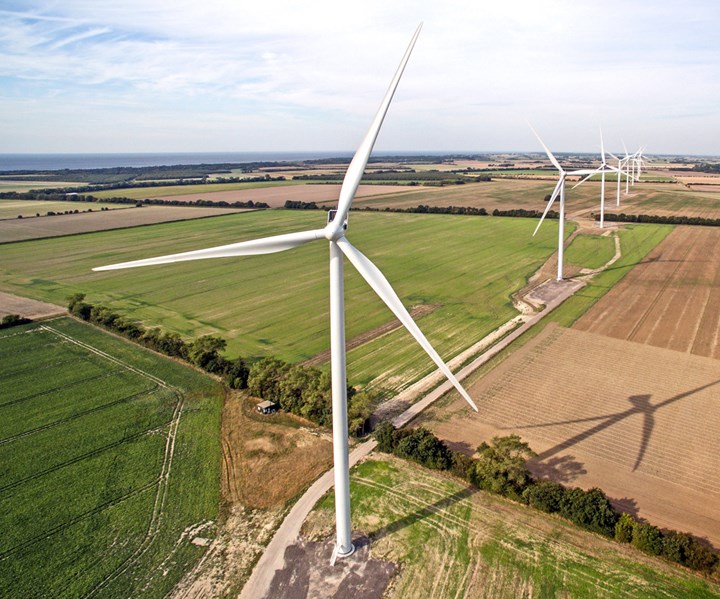Vestas to produce zero-waste wind turbines by 2040
Vestas plans to present its waste-management strategy within the next two years, including plans for decommissioned turbine blades and glass fiber recycling.

V117 3-megawatt wnd turbine platforms in Rødby Fjord, Denmark. Source | Vestas
Global wind turbine manufacturer Vestas (Aarhus, Denmark) announced on Jan. 20 that it plans to produce zero-waste wind turbines by 2040, as part of its company focus on sustainability.
Vestas says that it is the first turbine manufacturer to commit to zero-waste wind turbines, and that this process will involve running a value chain that generates no waste materials. This will be achieved by developing and implementing a new waste-management strategy, introducing a circular economy approach in the different phases of the value chain: design, production, service and end-of-life. Vestas plans to present this strategy within the next two years.
According to Vestas, waste generated from turbine blades is estimated to be around 43 million metric tonnes accumulated by 2050. Reporting that the global wind energy market set to grow by an average of 3% per year in the coming decade, Vestas says it is mitigating its own environmental impact by committing to eliminate waste across its value chain. Today, Vestas reports that its wind turbines are on average 85% recyclable, but that wind turbine blades currently comprise non-recyclable composite materials.
Vestas will consider all aspects of the turbine lifecycle, aimed at improving the recyclability rate of blades and nacelles. As a first step, Vestas will be focusing on improving the recyclability of all wind turbine blades. Incremental targets will be introduced to increase the recyclability rate of blades from 44% today, to 50% by 2025, and to 55% by 2030. This includes several initiatives designed to address the handling of existing blades after decommissioning, Vestas says. These will cover new recycling technologies that are optimal for composite waste, such as glass fiber recycling and plastic parts recovery. Vestas says it will also be implementing a new process around blade decommissioning, providing support to customers on how to decrease the amount of waste material being sent to landfill.
“Establishing such an ambitious goal for waste reduction is paramount to ensuring a better world for future generations,” says Anders Vedel, Vestas executive vice president of Vestas Power Solutions. “Leading the wind industry is not enough to combat the global challenges we face today. If we are to spearhead the energy transition, we must be an example for doing so in the most sustainable way, and this involves making sustainability part of everything we do.”
“As the world’s largest supplier of wind energy, Vestas has a responsibility to eliminate waste across its value chain,” says Tommy Rahbek Nielsen, Vestas interim chief operations officer. “Wind energy will continue to grow rapidly, therefore the time for a conservative approach is behind us. I am proud to be part of an organization that is making sustainability an integral component in all business operations.”
Related Content
-
Sulapac introduces Sulapac Flow 1.7 to replace PLA, ABS and PP in FDM, FGF
Available as filament and granules for extrusion, new wood composite matches properties yet is compostable, eliminates microplastics and reduces carbon footprint.
-
PEEK vs. PEKK vs. PAEK and continuous compression molding
Suppliers of thermoplastics and carbon fiber chime in regarding PEEK vs. PEKK, and now PAEK, as well as in-situ consolidation — the supply chain for thermoplastic tape composites continues to evolve.
-
Plant tour: Joby Aviation, Marina, Calif., U.S.
As the advanced air mobility market begins to take shape, market leader Joby Aviation works to industrialize composites manufacturing for its first-generation, composites-intensive, all-electric air taxi.

.jpg;width=70;height=70;mode=crop)













